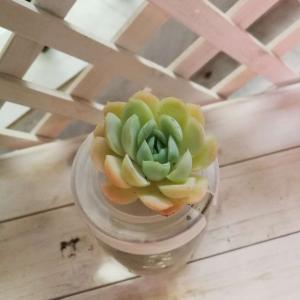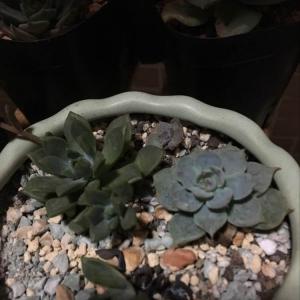文章
Miss Chen
2017年08月14日

The petunia -- with its long blooming period and low maintenance requirements -- remains one of the most popular flowering plants among gardeners, according to Clemson University Cooperative Extension. The plant grows 6 to 18 inches in height and spreads up to 4 feet, making it ideal for borders, containers and mass plantings.

Flowering
Petunias are annual flowers that bloom from spring until frost in the fall. Flowers reach up to 4 inches in diameter, depending on the cultivar, with the 'Grandiflora' variety producing the largest blooms. All petunias, but especially white and purple ones, produce a pleasant fragrance.
Growing Conditions
Although petunias are annuals, providing the best possible growing conditions allows petunias to produce more flowers for a longer period of time. Choose short and compact plants at the nursery, preferably ones without flowers, for best results when transplanting. Place petunias in full sun to avoid spindly plants with few flowers. Water deeply on a weekly basis and apply balanced fertilizer monthly to encourage root development and support fast growth and abundant flower production.

Deadheading
Removing old blooms allows petunias to put energy into new flower production rather than increased size and foliage development. This also improves the appearance of the plant.

Flowering
Petunias are annual flowers that bloom from spring until frost in the fall. Flowers reach up to 4 inches in diameter, depending on the cultivar, with the 'Grandiflora' variety producing the largest blooms. All petunias, but especially white and purple ones, produce a pleasant fragrance.
Growing Conditions
Although petunias are annuals, providing the best possible growing conditions allows petunias to produce more flowers for a longer period of time. Choose short and compact plants at the nursery, preferably ones without flowers, for best results when transplanting. Place petunias in full sun to avoid spindly plants with few flowers. Water deeply on a weekly basis and apply balanced fertilizer monthly to encourage root development and support fast growth and abundant flower production.

Deadheading
Removing old blooms allows petunias to put energy into new flower production rather than increased size and foliage development. This also improves the appearance of the plant.
0
0
文章
Dummer. ゛☀
2017年08月09日

Identification
Cistus albidus grows up to 1.5m in height, although most plants are little more than half this height. The hairy pale grey-green leaves are oblong to elliptical and have three prominent veins. The flowers are 4 to 6 cm across and have five purplish-pink petals backed by five sepals.
The leaves of cistus plants are very tough. The flowers, by comparison, seem very fragile and have wafer-thin, crumpled looking petals: they are nontheless beautiful for that, and it is easy to see why cistus is considered such a well-loved addition to northern European gardens.
Habitat
In the UK these shrubs are much-loved garden plants, but it is in the Mediterranean region that they really come into their own: vast tracts of hillsides (particularly in Portugal and Spain) are smothered with various species of these members of the Rockrose family.
Blooming times
Grey-leaved Cistus produces flowers from March to June and can be found in maquis, garrigue, open woodland, on steep slopes and rocky ground. Some of the other cistus species to be found in the Mediterranean include Cistus ladanifer (Gum Cistus), and Cistus salviifoloius (Sage-leaved Cistus).
Cistus albidus grows up to 1.5m in height, although most plants are little more than half this height. The hairy pale grey-green leaves are oblong to elliptical and have three prominent veins. The flowers are 4 to 6 cm across and have five purplish-pink petals backed by five sepals.

The leaves of cistus plants are very tough. The flowers, by comparison, seem very fragile and have wafer-thin, crumpled looking petals: they are nontheless beautiful for that, and it is easy to see why cistus is considered such a well-loved addition to northern European gardens.

Habitat
In the UK these shrubs are much-loved garden plants, but it is in the Mediterranean region that they really come into their own: vast tracts of hillsides (particularly in Portugal and Spain) are smothered with various species of these members of the Rockrose family.

Blooming times
Grey-leaved Cistus produces flowers from March to June and can be found in maquis, garrigue, open woodland, on steep slopes and rocky ground. Some of the other cistus species to be found in the Mediterranean include Cistus ladanifer (Gum Cistus), and Cistus salviifoloius (Sage-leaved Cistus).
0
0
文章
Miss Chen
2017年08月08日

The blue agave (Agave tequilana) is a large plant, up to 6 feet high with broad and stiff leaves forming an erect rosette. The leaves have a bluish tinge, giving the plant its name. Blue agaves produce a flower spike up to 15 feet high after between five and eight years of growth. Its hearts are used to make tequila, and it makes an excellent landscape plant in USDA Zones 9b and above.

Potted Agaves

Blue agave flower spike
Step 1
Place a potted blue agave plant outdoors in the sunniest available spot. Blue agaves thrive in full sun and are vulnerable to rot in shady or cool conditions.

Blue agave
Step 2
Water your agave during the warmer months of the year only when its soil is almost completely dry. Reduce watering to a minimum during the winter. Do not keep potted agaves on a dish as any excess irrigation water must be allowed to drain away. Fertilize only infrequently using a slow release granular fertilizer.

Blue agave detail
Step 3
Replant your agave in a bigger pot when its roots completely fill its container or it becomes top-heavy. Use a potting compost formulated for succulents or a standard potting compost mixed in with 33 percent sharp sand. A heavy clay container will prevent agave plants from toppling over.
Garden Agaves

Blue agave growing wild
Step 4
Grow blue agaves in a sunny spot with well drained, preferably sandy soil. A minimum of six hours of sunshine a day is ideal, according to the University of Florida IFAS Extension. Plant on a raised mound in areas prone to flooding.

Agave in a garden setting
Step 5
Water garden agaves only during summer during periods of drought or just after planting. Garden-grown agaves rarely need fertilizing but do benefit from mulching with organic matter such as bark chips.

Agave flower spike
Step 6
Propagate agaves from offsets or pups which appear around the base of the parent plant. Separate the pups once they have developed their own root systems. You can also propagate blue agaves from seeds collected from the flower spikes.

Potted Agaves

Blue agave flower spike
Step 1
Place a potted blue agave plant outdoors in the sunniest available spot. Blue agaves thrive in full sun and are vulnerable to rot in shady or cool conditions.

Blue agave
Step 2
Water your agave during the warmer months of the year only when its soil is almost completely dry. Reduce watering to a minimum during the winter. Do not keep potted agaves on a dish as any excess irrigation water must be allowed to drain away. Fertilize only infrequently using a slow release granular fertilizer.

Blue agave detail
Step 3
Replant your agave in a bigger pot when its roots completely fill its container or it becomes top-heavy. Use a potting compost formulated for succulents or a standard potting compost mixed in with 33 percent sharp sand. A heavy clay container will prevent agave plants from toppling over.
Garden Agaves

Blue agave growing wild
Step 4
Grow blue agaves in a sunny spot with well drained, preferably sandy soil. A minimum of six hours of sunshine a day is ideal, according to the University of Florida IFAS Extension. Plant on a raised mound in areas prone to flooding.

Agave in a garden setting
Step 5
Water garden agaves only during summer during periods of drought or just after planting. Garden-grown agaves rarely need fertilizing but do benefit from mulching with organic matter such as bark chips.

Agave flower spike
Step 6
Propagate agaves from offsets or pups which appear around the base of the parent plant. Separate the pups once they have developed their own root systems. You can also propagate blue agaves from seeds collected from the flower spikes.
0
0
文章
Colour_
2017年08月08日
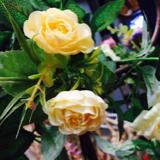
#报春花 通常采用种子繁殖,在采集种子与播种中应注意:
①采种。报春花在5-6月结籽,结实期间要注意通风,同时湿度不宜过大。由于种子成熟期不一,需边成熟边采收,采下的种子切忌放在太阳下暴晒,以免丧失种子发芽率,而应放在阴处晾干。
②播种。报春花播种可在8-9月份间进行,种子发芽温度为15℃-20℃。播种代用浅盆与疏松、排水良好的细土,由于种子细小,播种后需压实,不必覆土。浇水采用浸盆法,让水从盆底孔慢慢地往上渗到盆面,使盆土湿润,然后盖上玻璃,保湿,置于半阴处,约2周便可发芽,此时应揭去玻璃。
ps:报春花花语:青春的快乐和悲伤,不悔。
报春花由于是春天的象征,所以被人们用来比作每个人的必经阶段—青春期,所以报春花的花语就是青春的快乐和悲伤,而报春花总是在万物都没有复苏的时候开花,叫醒了世间万物然后独自凋谢,但是年复一年皆如此,所以报春花还有一个花语那就是不悔!
报春花西方花语寓意:初恋、新婚燕尔、不渝的爱、(白色花)精力充沛、(红色花)心在燃烧、(紫色花)智慧等。
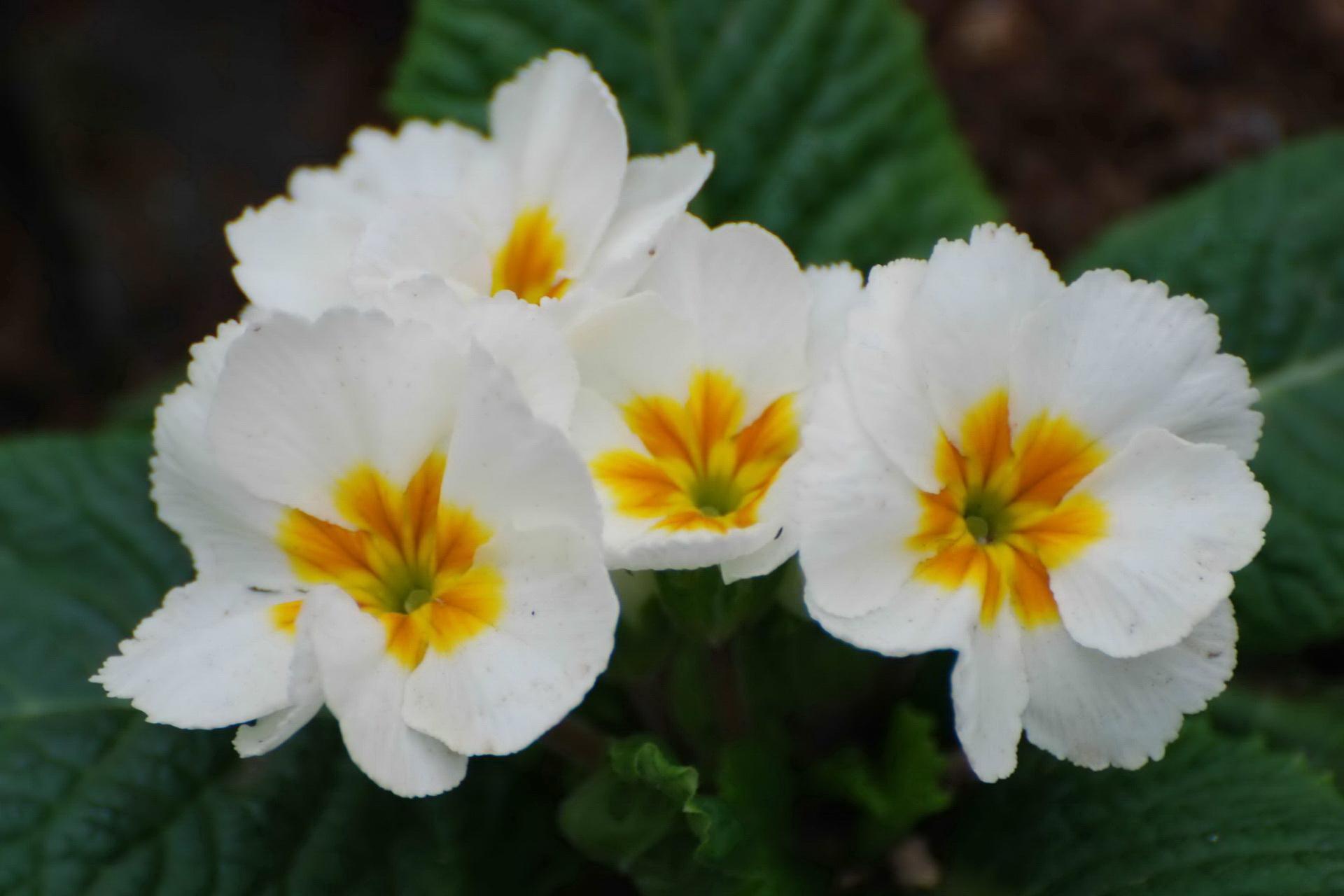
①采种。报春花在5-6月结籽,结实期间要注意通风,同时湿度不宜过大。由于种子成熟期不一,需边成熟边采收,采下的种子切忌放在太阳下暴晒,以免丧失种子发芽率,而应放在阴处晾干。
②播种。报春花播种可在8-9月份间进行,种子发芽温度为15℃-20℃。播种代用浅盆与疏松、排水良好的细土,由于种子细小,播种后需压实,不必覆土。浇水采用浸盆法,让水从盆底孔慢慢地往上渗到盆面,使盆土湿润,然后盖上玻璃,保湿,置于半阴处,约2周便可发芽,此时应揭去玻璃。
ps:报春花花语:青春的快乐和悲伤,不悔。
报春花由于是春天的象征,所以被人们用来比作每个人的必经阶段—青春期,所以报春花的花语就是青春的快乐和悲伤,而报春花总是在万物都没有复苏的时候开花,叫醒了世间万物然后独自凋谢,但是年复一年皆如此,所以报春花还有一个花语那就是不悔!
报春花西方花语寓意:初恋、新婚燕尔、不渝的爱、(白色花)精力充沛、(红色花)心在燃烧、(紫色花)智慧等。

0
0
文章
Colour_
2017年08月08日


一、盆栽#风信子
可用腐叶土、园土和沙土各1/3配制培养土,栽植深度以鳞茎的肩部与土面等平为宜。栽后充分浇水,放人冷室内,室温保持在4 ~6℃,促使其发根。待花茎开始生长时须将花盆移到温暖处。
日常养护:风信子喜光照充足和比较湿润的环境,因此,生长期间要放置在阳光充足的地方,同时要经常保持盆土湿润。抽出花葶后每天向叶面上喷水1~2次,以增加空气湿度。风信子正常花期在3―4月间,开花前后各施1~2次腐熟的稀薄液肥。花后施肥有助促进子球生长。6月气温渐热,叶片枯黄,这时应将鳞茎从盆内磕出,略加干燥,放室内通风阴凉处贮藏。
二、地栽风信子
宜选择土质疏松肥沃、排水良好的地方,于9~10月种植。种植前要耕翻土地,并施人大量腐熟有机肥和少量骨粉。花坛栽植时株距约为15厘米,栽后覆土5―8厘米,充分浇水,并盖草帘保墒。冬季不需要防寒保护。一般每隔3―4年挖掘1次分球后再种。在长江流域繁殖主要用分球繁殖法。夏季,风信子植株枯萎进入休眠期,将其从土中挖出,晾干贮藏,到秋季9―10月栽植前,将子球与母球分离,另行栽植即可。
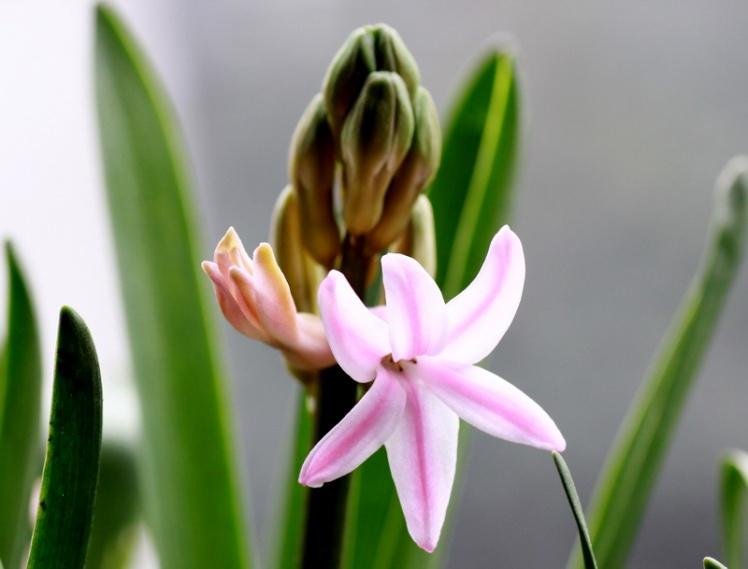
注意事项:
①子球不能在夏季挖出时分离,否则容易腐烂。
②栽培后期要节水节肥,避免鳞茎“裂底”发生腐烂。
③适时采收,早则生长不充实;迟则遇雨季,会使鳞茎不易阴干,影响贮藏。
④除去病球,减少传染。
为促使其母球产生更多的小子球,可于休眠期在母鳞茎底部的鳞茎盘上用小刀划出十字形或米字形伤口,埋入沙中2―3周,待伤口愈合后,再栽人培养土中。夏末,母鳞茎盘四周就会产生许多小鳞茎,待小鳞茎长到1厘米左右时,就可以分开栽培了。

0
0
文章
Miss Chen
2017年08月07日


Colchicum
Delightful colchicum is a dramatic plant for adding a burst of fall color to your garden. It bears big flowers that look like crocus in shades of pink and white. The flowers rise about 6 inches above the ground and appear seemingly overnight, so plant it near a path or other spot where you're sure to see it.

Like crocus, this bulb blooms year after year, getting bigger and better with age. And also like most crocus, it produces foliage in spring -- so don't be surprised to see the long, strappy leaves among your tulips and other early season bulbs. The leaves gather energy for the blooms, then disappear by midsummer.

One note: All parts of the plant are poisonous -- so be sure to keep it away from children who might be tempted to eat its candy-color blooms. Because it's poisonous, however, it's typically ignored by even the hungriest deer, rabbits, and other critters.

LIGHT:Sun
TYPE:Bulb
HEIGHT:Under 6 inches to 12 inches
WIDTH:To 12 inches wide
FLOWER COLOR:Pink, White
SEASONAL FEATURES:Fall Bloom
PROBLEM SOLVERS:Deer Resistant
SPECIAL FEATURES:Good for Containers, Low Maintenance
ZONES:4-9
0
0
文章
Miss Chen
2017年08月07日


Amaryllis
Hippeastrum_ hybrids

Amaryllis is an easy bulb to grow. Its enormous cluster of trumpet-shape blooms may require staking to keep them upright, but blooms may last for up to 6 weeks. Keep the plant cool (60-65 degrees F) while in bloom but slightly warmer at other times when it is actively growing. It needs bright light and evenly moist soil, except when it is dormant. Force the bulb to go dormant in late summer or early fall by withholding water and placing it in a cool, dry location for a couple of months. Resume watering and move it to a warm spot to force new growth.

TYPE:Bulb, Houseplant
HEIGHT:1 to 3 feet
WIDTH:6-12 inches wide
FLOWER COLOR:Pink, Red, White
SEASONAL FEATURES:Spring Bloom, Winter Bloom
SPECIAL FEATURES:Low Maintenance

0
0
文章
Dummer. ゛☀
2017年08月07日

So waxy and beautifully veined, these delightful little flowers are quite unlike most other members of the Primrose family.
Identification
Once you get to see it at close quarters, this wildflower is quite unmistakable. Flowers are 6 to 10mm across with usually 5 to 7 lilac-pink round petals patterned with longitudinal red veins; they are backed by pointed short sepals. The centres contain a tangled mass of filamentous stamens.
Along the prostrate red-tinged stems are opposite pairs of leaves on shortish stalks; most leaves are roundish but some are shaped like the Ace of Spades.
A single flower grows on a short up-turned slender stalk at the end of each creeping stem, but when in full bloom the flowers of Bog Pimpernel all but obliterate the leaves, so densely are they packed together..
Distribution
In Britain and Ireland this lovely little wildflower is localised in the south and west; it is also found in Ireland where it is also most common on the western side.
Bog Pimpernel is found throughout most of Europe except in the far north and in arid parts of the south. Its range extends eastwards into Asia, but this wildflower is not native to North America.
Habitat
Anagallis tenella generally favours damp and acidic peaty substrates, but it can also be found in alkaline coastal dune slacks. As with all marsh and wetland plants, the enemy of Bog Pimpernel is land drainage.
Blooming Times
In Britain and Ireland Bog Pimpernel produces dense mats of flowers that open fully on sunny days from May right through to September.
Uses
Don't even think of picking these flowers; they are extremely fragile and likely to break as soon as they are touched. Cultivated forms of Bog Pimpernel are available from specialist garden centres and nurseries, and they make wonderful additions to any bog garden or to the waterlogged margin of a small pond.
Identification
Once you get to see it at close quarters, this wildflower is quite unmistakable. Flowers are 6 to 10mm across with usually 5 to 7 lilac-pink round petals patterned with longitudinal red veins; they are backed by pointed short sepals. The centres contain a tangled mass of filamentous stamens.

Along the prostrate red-tinged stems are opposite pairs of leaves on shortish stalks; most leaves are roundish but some are shaped like the Ace of Spades.
A single flower grows on a short up-turned slender stalk at the end of each creeping stem, but when in full bloom the flowers of Bog Pimpernel all but obliterate the leaves, so densely are they packed together..
Distribution
In Britain and Ireland this lovely little wildflower is localised in the south and west; it is also found in Ireland where it is also most common on the western side.
Bog Pimpernel is found throughout most of Europe except in the far north and in arid parts of the south. Its range extends eastwards into Asia, but this wildflower is not native to North America.

Habitat
Anagallis tenella generally favours damp and acidic peaty substrates, but it can also be found in alkaline coastal dune slacks. As with all marsh and wetland plants, the enemy of Bog Pimpernel is land drainage.
Blooming Times
In Britain and Ireland Bog Pimpernel produces dense mats of flowers that open fully on sunny days from May right through to September.

Uses
Don't even think of picking these flowers; they are extremely fragile and likely to break as soon as they are touched. Cultivated forms of Bog Pimpernel are available from specialist garden centres and nurseries, and they make wonderful additions to any bog garden or to the waterlogged margin of a small pond.
0
0
文章
Dummer. ゛☀
2017年08月07日

For people living in Britain and Ireland, Candytuft in the form of a cultivar is associated with neat, edged flowerbeds in gardens and parks in the height of summer.
Identification
The flowers of Burnt Candytuft, a dwarf rock plant, are 3 to 6 mm across and have four notched petals; they are variable in colour and can be white, pink or mauve. Stems range from 3 to 35 cm tall and have a rather woody base.
Distribution
Burnt Candytuft is found in the western and central Mediterranean from Spain eastwards to Greece and also in Sardinia, Sicily and Crete.
Habitat
This member of the brassicaceae (Cabbage family, formerly known as cruciferae) grows in rocky habitats in the hills and mountains.
Blooming Times
Burnt Candytuft blooms in springtime.
Identification
The flowers of Burnt Candytuft, a dwarf rock plant, are 3 to 6 mm across and have four notched petals; they are variable in colour and can be white, pink or mauve. Stems range from 3 to 35 cm tall and have a rather woody base.

Distribution
Burnt Candytuft is found in the western and central Mediterranean from Spain eastwards to Greece and also in Sardinia, Sicily and Crete.
Habitat
This member of the brassicaceae (Cabbage family, formerly known as cruciferae) grows in rocky habitats in the hills and mountains.

Blooming Times
Burnt Candytuft blooms in springtime.
0
0
文章
Miss Chen
2017年08月06日


Description: This perennial wildflower consists of a low rosette of basal leaves up to 1½' across and a flowering stalk about 1½–2' tall. The floppy basal leaves are 6-12" long and 1/3" (8 mm.) across; they are medium to dark green, linear in shape, parallel-veined, glabrous, and smooth along their margins. Along the underside of each basal leaf, there is a prominent mid-rib. The erect central stalk is slender, light to medium green, and glabrous; it terminates in a spike-like raceme of flowers that is several inches in length. Underneath the floral spike, there are usually 1-3 bracts along the stalk. These bracts are green, linear to linear-lanceolate in shape, and up to ¾" long. Each flower is ¾–1" across, consisting of 6 tepals, 6 stamens with bright yellow anthers, and a green central ovary with a slender style. The tepals are light blue-violet to nearly white; they are oblong in shape and spread widely from the center of the flower. Each tepal (petal or petal-like sepal) has 1-3 poorly defined veins along its length.
At the base of each flower, there is a single linear bract up to ¾" long that is early-deciduous. The slender pedicel of each flower is about the same length as the bract. The flowers begin to bloom from the bottom of the raceme and continue to bloom upward toward the apex; each flower lasts only 2-3 days. The blooming period occurs from mid- to late spring and lasts about 2-3 weeks. Each fertilized flower is replaced by a 3-celled seed capsule that is about 1/3" in length and nearly as much across. Each seed capsule contains many small seeds that are black and shiny. The basal leaves turn yellow and wither away by mid-summer. The root system consists of a bulb with fibrous roots. This wildflower reproduces by reseeding itself.
Cultivation: The preference is full sun to light shade, moist conditions, and rich loamy soil. Wild Hyacinth is slow to develop, but fairly long-lived. Vegetative growth and development occurs during the cool weather of spring, when adequate moisture is essential.
Range & Habitat: Wild Hyacinth is found occasionally throughout Illinois (see Distribution Map), where it is native. Habitats include moist black soil prairies, moist savannas, moist open woodlands (particularly along the banks of streams), rocky wooded slopes, and limestone glades. This species is typically found in high quality habitats, whether prairies or woodlands.
Faunal Associations: The flowers attract their fair share of insects, including many bees and flies, and occasional butterflies and wasps. Most of these insects seek nectar from the flowers, although some short-tongued bees also collect pollen. Bee visitors include honeybees, bumblebees, Cuckoo bees (Nomada spp.), and Halictid bees (Halictus spp., Lasioglossum spp., etc.). Other floral-faunal relationships are poorly understood. White-Tailed Deer occasionally chomp off the tops of the basal leaves. Both the foliage and bulbs are not known to be toxic to mammalian herbivores.
Photographic Location: Along a woodland stream in Douglas or Coles County in east-central Illinois.
Comments: Wild Hyacinth has attractive flowers that are conspicuous during the spring. It is usually found in woodland habitats, but also occurs in prairies. Wild Hyacinth differs from the less common Camassia angusta (Prairie Hyacinth) in several ways, among them: 1) It has slightly larger flowers than the latter, 2) its flowers are usually a slightly lighter shade of blue-violet, 3) its seed capsules are about as broad as long, while Prairie Hyacinth has seed capsules that are slightly longer than broad, 4) the bracts of its flowering stalk are less persistent than those of Prairie Hyacinth, and 5) it blooms earlier in the spring.

0
0
文章
Miss Chen
2017年08月06日


Description: This plant is a summer annual about 6-20" tall that branches frequently; large specimens can be as wide as they are tall, resembling a tumbleweed in shape. The rather stout stems are light green, terete to slightly angular, and glabrous. Alternate leaves occur along these stems that are 1-2" long and ¼-½" across; they are medium green, glabrous, and oblanceolate with margins that are coarsely crenate, shallowly lobed, or undulate. Small upper leaves often have smooth margins. The leaves are slightly succulent with a thick texture. The upper stems terminate in racemes of flowers about 2-10" long. Individual flowers are up to ¼" across, consisting of 4 lavender to white petals, 4 green sepals, 6 stamens, and a pistil with a single style. The oblong-lanceolate sepals are about ¼" long and glabrous, while the oblong petals spread widely during the short period when a flower is in bloom. The ascending pedicels are green and glabrous.
The blooming period occurs from mid-summer into the fall, lasting about 3 months. Only a few flowers are in bloom at the same time toward the apex of the racemes. The flowers are replaced by elongated seedpods (silicles) about ½-¾" long. Each seedpod has a lower segment (up to ¼" long) that is ovoid-cylindrical in shape, and an upper segment (up to ½" long) that is lanceoloid with a long tapering beak. Between these two segments, the seedpod is slightly constricted. The upper segment contains a single seed, while the lower segment contains either a single seed or none. At maturity, the upper segment of each seedpod becomes detached from the lower segment, while the lower segment persists on the dried remains of the plant. The upper segment can float on water, and it is often carried off by the waves of the lake or sea. Eventually, the upper segment is deposited at another beach, thereby introducing its seed to a new area. The seed of the lower segment usually germinates in proximity to its mother plant, colonizing the same beach.
Cultivation: The preference is full sun, moist to dry-mesic conditions, and very sandy soil. This plant also adapts to gravelly or rocky shorelines.
Range & Habitat: The native Sea Rocket is a rare plant in Illinois that is state-listed as 'threatened.' Its distribution is restricted to the shoreline of Lake Michigan in the NE section of the state (see Distribution Map). Habitats consist of sandy beaches and, to a lesser extent, gravelly or rocky shorelines. Outside of the state, Sea Rocket can be found along the shore lines of other Great Lakes (except the northernmost areas); a closely related subspecies of Sea Rocket is also found along the Atlantic coast.
Faunal Associations: Very little is known about floral-faunal relationships for this plant. Similar to other flowering plants in the Mustard family, Sea Rocket's flowers are probably cross-pollinated by small bees, flies, beetles, and small to medium-sized butterflies. There is a native flea beetle, Phyllotreta chalybeipennis, that feeds primarily, if not exclusively, on the foliage of Sea Rocket: its larvae form mines through the leaves. Other flea beetles that feed on the foliage of this plant include Phyllotreta crucifera (introduced from Europe), Phyllotreta punctulata, and Phyllotreta striolata (Clark et al., 2004). Larvae of a moth, the Rubbed Dart (Euxoa detersa), also referred to as the Sandhill Cutworm, feed primarily on the underground parts of Sea Rocket and many other plants in sandy areas (Covell, 1984/2005).
Photographic Location: A sandy beach at Indiana Dunes State Park in NW Indiana.
Comments: This member of the Mustard family is quite unique and easy to identify: it has slightly succulent leaves and unusual seedpods with 2 segments. Sea Rocket is a pioneer species of sandy beaches, colonizing areas that only a few plant species can tolerate. Because its succulent leaves can store water, it is able to withstand the desiccating effect of sunlight and sand. The root system helps to bind and stabilize the sand, while the decayed remnants of foliage add organic material and nutrients to the impoverished soil. This enables other plants to colonize the beach, beginning the process of ecological succession.

0
0
文章
Miss Chen
2017年08月06日


Description: This wildflower consists of a low rosette of basal leaves up to 6" across; a mature plant will produce one or more flowering stalks about ½–1' tall. The blades of the basal leaves are up to 3" long and 2½" across; they have stout hairy petioles up to 1½" long. The basal leaves are more or less oval in shape, crenate along their margins, palmately veined, and hairy on both their upper and lower surfaces; the upper surface of each leaf is medium green, while the lower surface is pale green or pale purplish green. Each flowering stalk is stout, erect, terete, light green, and very hairy; it has small alternate leaves up to 1¼" long and ½" across, which become gradually smaller as they ascend toward the inflorescence. The alternate leaves are similar to the basal leaves, except they are ovate in shape and smaller in size. Each alternate leaf is sessile or it clasps the stalk.
The inflorescence consists of a stout spike of small flowers about 2-6" long. These flowers are densely clustered along the spike, facing in all directions. Underneath each flower, there is a small leafy bract that is lanceolate. Each flower has a 2-lipped corolla that is cream-colored or pale yellow, and a calyx consisting of 4 green sepals that are elliptic and hairy. The corolla is about 5 mm. long and slightly longer than the calyx; the upper lip of the corolla is unlobed, while the irregular lower lip is unlobed or divided into 2-3 lobes. Each flower has a pair of exserted stamens and a slender white style. The blooming period occurs from mid-spring to early summer, lasting about 3 weeks for a colony of plants. The flowers bloom gradually from the bottom of the spike to its apex. Afterwards, the flowers are replaced by small 2-celled seed capsules; each capsule contains several seeds. The root system consists of a cluster of coarse fibrous roots; an older plant may form a small caudex. This wildflower occasionally forms colonies at favorable sites.
Cultivation: The preference is full sun, dry conditions, and a barren acidic soil that is sandy or gravelly. Partial sun is also acceptable. This wildflower grows slowly and doesn't tolerate competition from taller, more aggressive plants. It is adaptable to sunny rock gardens and there are few problems with pests and disease.
Range & Habitat: The native Kittentails is restricted to the west-central and northwest sections of Illinois, where it is rare (see Distribution Map). This wildflower is state-listed as 'threatened.' Habitats include dry sand prairies, dry gravel prairies, hill prairies, barren savannas, thinly wooded bluffs, and sandy or gravelly riverbanks. This species is restricted to high quality habitats in natural areas; it is endemic to the Midwest and uncommon throughout its range.
Faunal Associations: The flowers are cross-pollinated by small bees, especially Halictid bees that seek nectar and/or pollen. The following Halictid bees have been observed to visit the flowers of Kittentails: Auglochlorella striata, Lasioglossum anomalum, and Lasioglossum vierecki (McKone et al., 1995; Moure & Hurd, 1987). Additional information about floral-faunal relationships is unavailable.
Photographic Location: The wildflower garden of the webmaster in Urbana, Illinois.
Comments: While not particularly showy, Kittentails is an unusual little plant. It resembles some broad-leaved Plantago spp. (Plantains), but the floral spike of Kittentails is more stout and its flowers are insect-pollinated. The closest relatives (either Besseya spp. or Synthyris spp.) are found in mountainous areas of the western states. These latter species usually have flowers (or floral bracts) that are purple, otherwise they are similar in appearance to their eastern counterpart. Another scientific name of Kittentails is Wulfenia bullii.

0
0
文章
Miss Chen
2017年08月06日


Description: This herbaceous perennial plant is about 3-6' tall and forms an erect, sparsely branched bush, although it is herbaceous. The stout central stem and upper side stems are smooth, light green or reddish purple, and glaucous. The compound leaves are trifoliate. They are usually greyish green or blue green, and hairless. Each leaflet is ovate or oblanceolate and pointed at both ends, with smooth margins, and about 2" long and ¾" across. The white flowers occur in erect spike-like racemes up to 2' long and are quite showy. They are typical pea flowers in overall structure, and about 1" long. There is no floral scent. The blooming period occurs from late spring to mid-summer and lasts about 1-1½ months. The flowers are replaced by large oblong seedpods, which are also rather showy. They are about 2" long and initially green, but later turn black. There is a stout deep taproot, and rhizomes that may form vegetative offsets. Once established, White Wild Indigo grows very quickly during the spring – it often towers above the surrounding plants by blooming time.
Cultivation: The preference is full sun and moist to slightly dry soil. The soil can contain significant amounts of loam, clay, gravelly material, or sand. This plant is not fussy about growing conditions, and is easy to grow. However, it dislikes alkaline soil and may fail to bloom in shady conditions. Like other wild indigos, this plant may take several years to reach blooming size, but it is long-lived. The roots increase nitrogen levels in the soil.
Range & Habitat: The native White Wild Indigo is widely distributed and occurs in almost every county of Illinois, but it is usually uncommon (see Distribution Map). In a few areas that are scattered around the state, this plant is locally common. Some local populations may be escaped cultivated plants, or the result of restoration efforts. Habitats include moist to dry black soil prairies, sand prairies, thickets, edges of marshes and sandy marshes, borders of lakes, limestone glades, and dry clay hills. White Wild Indigo is typically found in less disturbed habitats, partly because of limited seed dispersion. Occasional wildfires are readily tolerated.
Faunal Associations: Worker bumblebees pollinate the flowers. The caterpillars of some skippers and butterflies occasionally feed on the foliage, including Erynnis baptisiae (Wild Indigo Duskywing), Achelerus lyciades (Hoary Edge), Colias cesonia (Southern Dogface), and Colias eurythema (Orange Sulfur). The caterpillars of the moth Dasylophus anguina (Black-spotted Prominent) can also be found on the foliage. Another insect, Apion rostrum (Wild Indigo Weevil), feeds on this plant and other Baptisia spp. The adult weevils eat both the leaves and flowers, while their grubs stay in the pods and eat the seeds. Because White Wild Indigo is poisonous, it is not much bothered by mammalian herbivores. If cattle, horses, or other kinds of livestock consume sufficient quantities of this plant, they can be seriously poisoned.
Photographic Location: The photographs of the racemes and leaf close-up were taken at Meadowbrook Park in Urbana, Illinois.
Comments: Large specimens of this wildflower are very striking while they are in bloom. White Wild Indigo is considerably taller than the related Baptisia bracteata (Cream Wild Indigo), which has spreading racemes of flowers that bloom earlier in the year. Other species of this genus in Illinois have yellow or blue-violet flowers. Another scientific name of White Wild Indigo is Baptisia leucantha.
0
0



